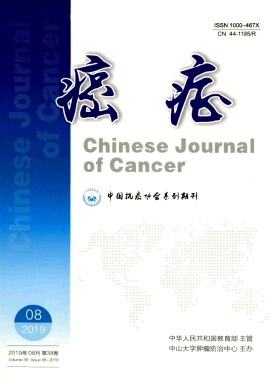
The parapharyngeal space (PPS) is an inverted pyramid-shaped deep space in the head and neck region, and a variety of tumors, such as salivary gland tumors, neurogenic tumors, nasopharyngeal carcinomas with parapharyngeal invasion, and lymphomas, can be found in this space. The differential diagnosis of PPS tumors remains challenging for radiologists. This study aimed to develop and test a modified method for locating PPS tumors on magnetic resonance (MR) images to improve preoperative differential diagnosis. The new protocol divided the PPS into three compartments: a prestyloid compartment, the carotid sheath, and the areas outside the carotid sheath. PPS tumors were located in these compartments according to the displacements of the tensor veli palatini muscle and the styloid process, with or without blood vessel separations and medial pterygoid invasion. This protocol, as wel as a more conventional protocol that is based on displacements of the internal carotid artery (ICA), was used to assess MR images captured from a series of 58 PPS tumors. The consequent distributions of PPS tumor locations determined by both methods were compared. Of al 58 tumors, our new method determined that 57 could be assigned to precise PPS compartments. Nearly all (13/14; 93%) tumors that were located in the pre-styloid compartment were salivary gland tumors. All 15 tumors within the carotid sheath were neurogenic tumors. The vast majority (18/20; 90%) of trans-spatial lesions were malignancies. However, according to the ICA-based method, 28 tumors were located in the pre-styloid compartment, and 24 were located in the post-styloid compartment, leaving 6 tumors that were difficult to locate. Lesions located in both the pre-styloid and the post-styloid compartments comprised various types of tumors. Compared with the conventional ICA-based method, our new method can help radiologists to narrow the differential diagnosis of PPS tumors to specific compartments.
作者: 刊期: 2014年第10期
The establishment and maintenance of mammary epithelial cell identity depends on the activity of a group of proteins, collectively called maintenance proteins, that act as epigenetic regulators of gene transcription through DNA methylation, histone modification, and chromatin remodeling. Increasing evidence indicates that dysregulation of these crucial proteins may disrupt epithelial cellintegrity and trigger breast tumor initiation. Therefore, we exploredin silico the expression pattern of a panel of 369 genes known to be involved in the establishment and maintenance of epithelial cellidentity and mammary gland remodeling in cell subpopulations isolated from normal human mammary tissue and selectively enriched in their content of bipotent progenitors, committed luminal progenitors, and differentiated myoepithelial or differentiated luminal cells. The results indicated that, compared to bipotent cells, differentiated myoepithelial and luminal subpopulations were both characterized by the differential expression of 4 genes involved in cell identity maintenance:CBX6 andPCGF2, encoding proteins belonging to the Polycomb group, andSMARCD3 andSMARCE1, encoding proteins belonging to the Trithorax group. In addition to these common genes, the myoepithelial phenotype was associated with the differential expression of HDAC1, which encodes histone deacetylase 1, whereas the luminal phenotype was associated with the differential expression ofSMARCA4 andHAT1, which encode a Trithorax protein and histone acetylase 1, respectively. The luminal compartment was further characterized by the overexpression ofALDH1A3 and GATA3, and the down-regulation ofNOTCH4and CCNB1, with the latter suggesting a block in cell cycle progression at the G2 phase. In contrast, myoepithelial differentiation was associated with the overexpression ofMYC and the down-regulation ofCCNE1, with the latter suggesting a block in cellcycle progression at the G1 phase.
作者: 刊期: 2014年第10期
Outdoor air polution has been recently classified as a class I human carcinogen by the World Health Organization (WHO). Cumulative evidence from across the globe shows that polluted air is associated with increased risk of lung, head and neck, and nasopharyngeal cancers-all of which affect the upper aerodigestive tract. Importantly, these cancers have been previously linked to smoking. In this article, we review epidemiologic and experimental evidence of the genotoxic and mutagenic effects of air pollution on DNA, purportedly a key mechanism for cancer development. The alarming increase in cancers of the upper aerodigestive tract in Asia suggests a need to focus government efforts and research on reducing air polution, promoting clean energy, and investigating the carcinogenic effects of air polution on humans.
作者: 刊期: 2014年第10期
Over half of the world’s population is exposed to household air polution from the burning of solid fuels at home. Household air polution from solid fuel use is a leading risk factor for global disease and remains a major public health problem, especialy in low- and mid-income countries. This is a particularly serious problem in China, where many people in rural areas stil use coal for household heating and cooking. This review focuses on several decades of research carried out in Xuanwei County, Yunnan Province, where household coal use is a major source of household air polution and where studies have linked household air pollution exposure to high rates of lung cancer. We conducted a series of case-control and cohort studies in Xuanwei to characterize the lung cancer risk in this population and the factors associated with it. We found lung cancer risk to vary substantialy between different coal types, with a higher risk associated with smoky (i.e., bituminous) coal use compared to smokeless (i.e., anthracite) coal use. The instalation of a chimney in homes resulted in a substantial reduction in lung cancer incidence and mortality. Overal, our research underscores the need among existing coal users to improve ventilation, use the least toxic fuel, and eventualy move toward the use of cleaner fuels, such as gas and electricity.
作者: 刊期: 2014年第10期
Gastric cancer is a leading cause of cancer deaths in the world. The treatment of gastric cancer is chalenging because of its highly heterogeneous etiology and clinical characteristics. Recent genomic and molecular characterization of gastric cancer, especialy the findings reported by the Cancer Genome Atlas (TCGA), have shed light on the heterogeneity and potential targeted therapeutics for four different subtypes of gastric cancer.
作者: 刊期: 2014年第10期